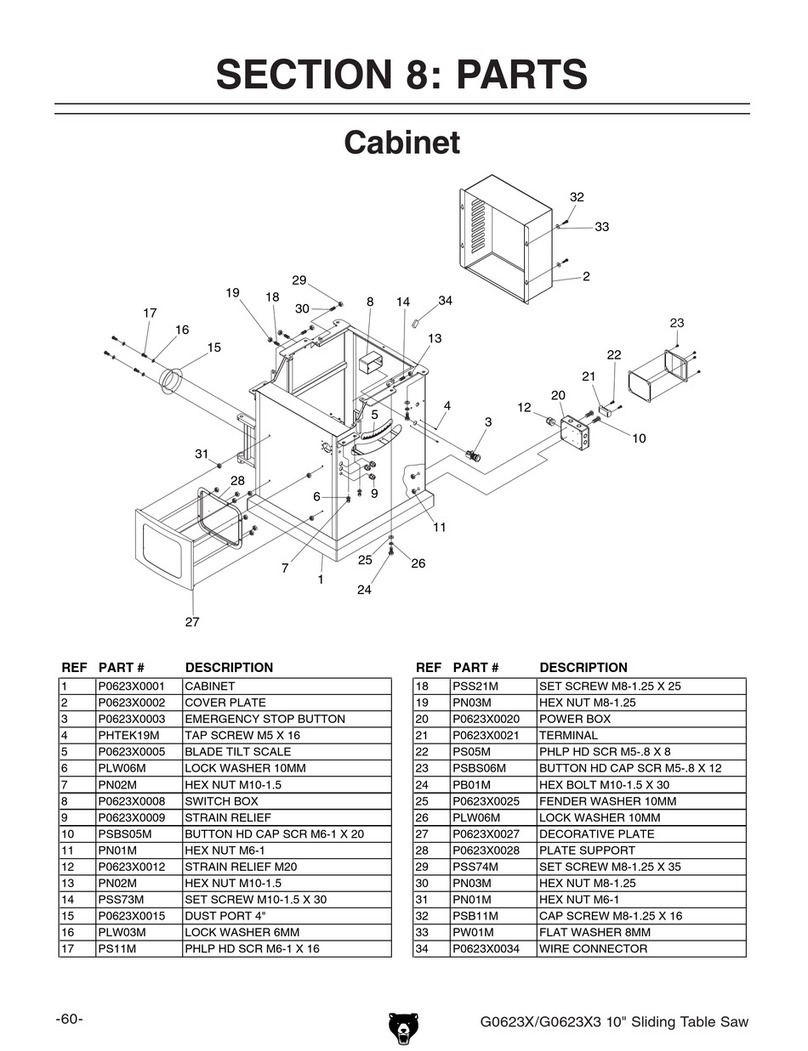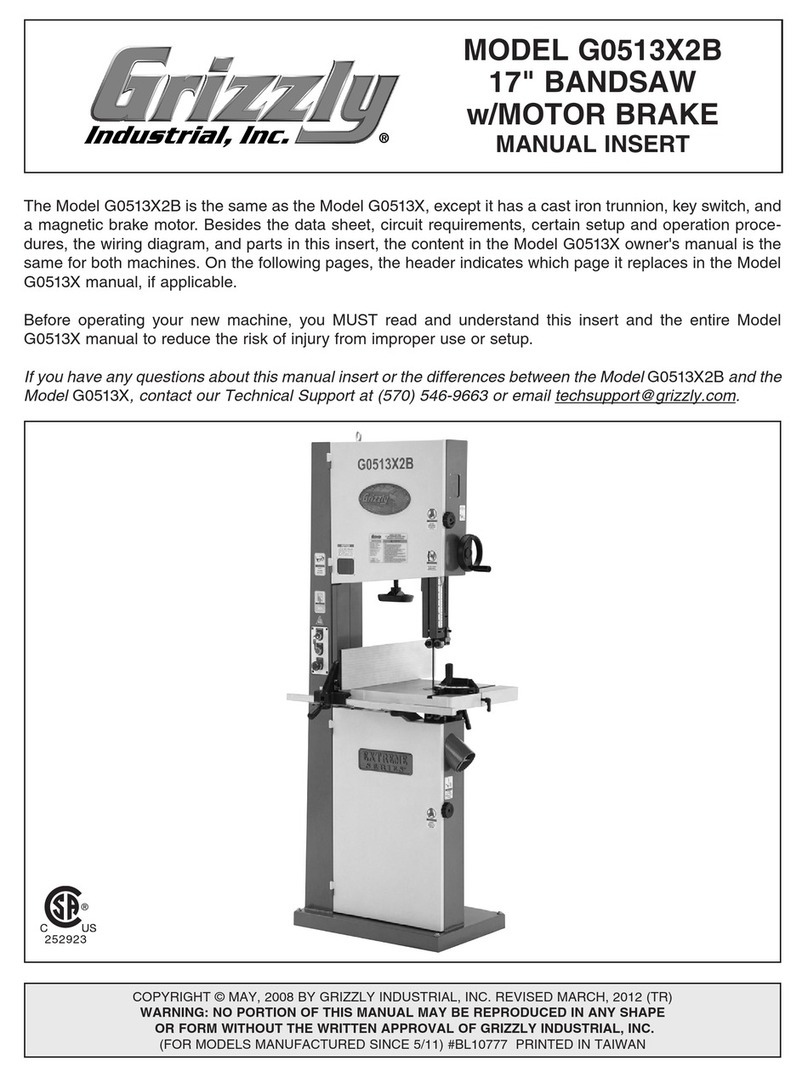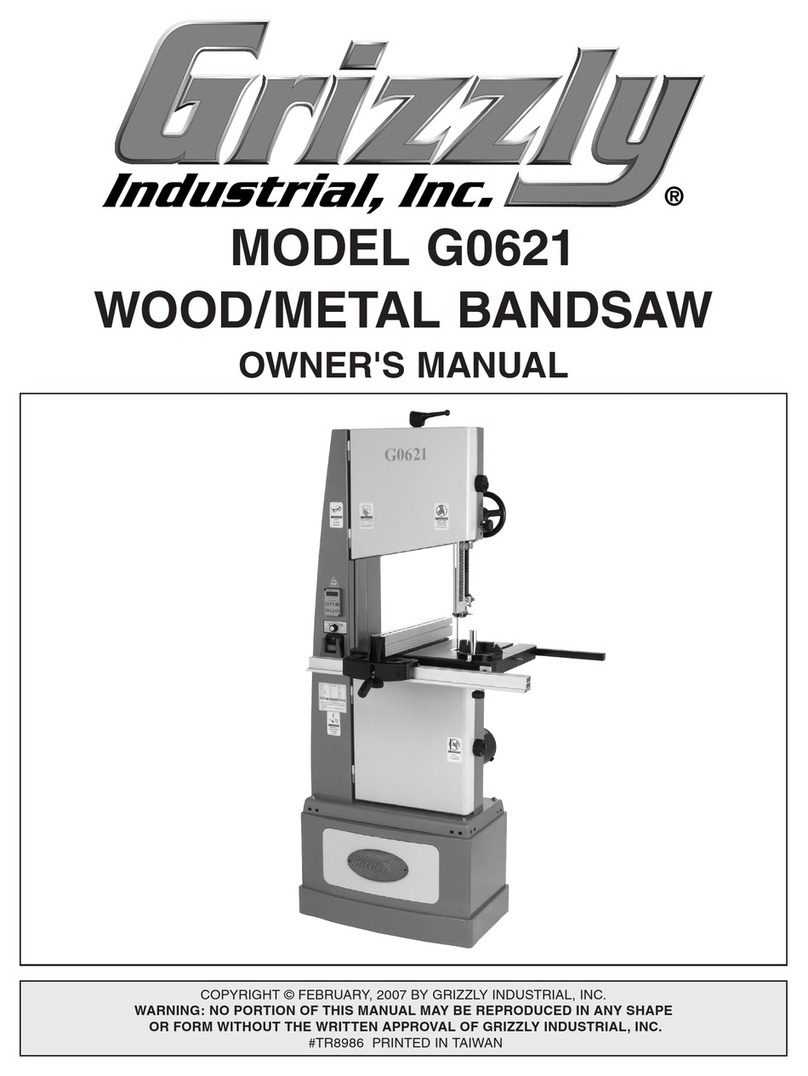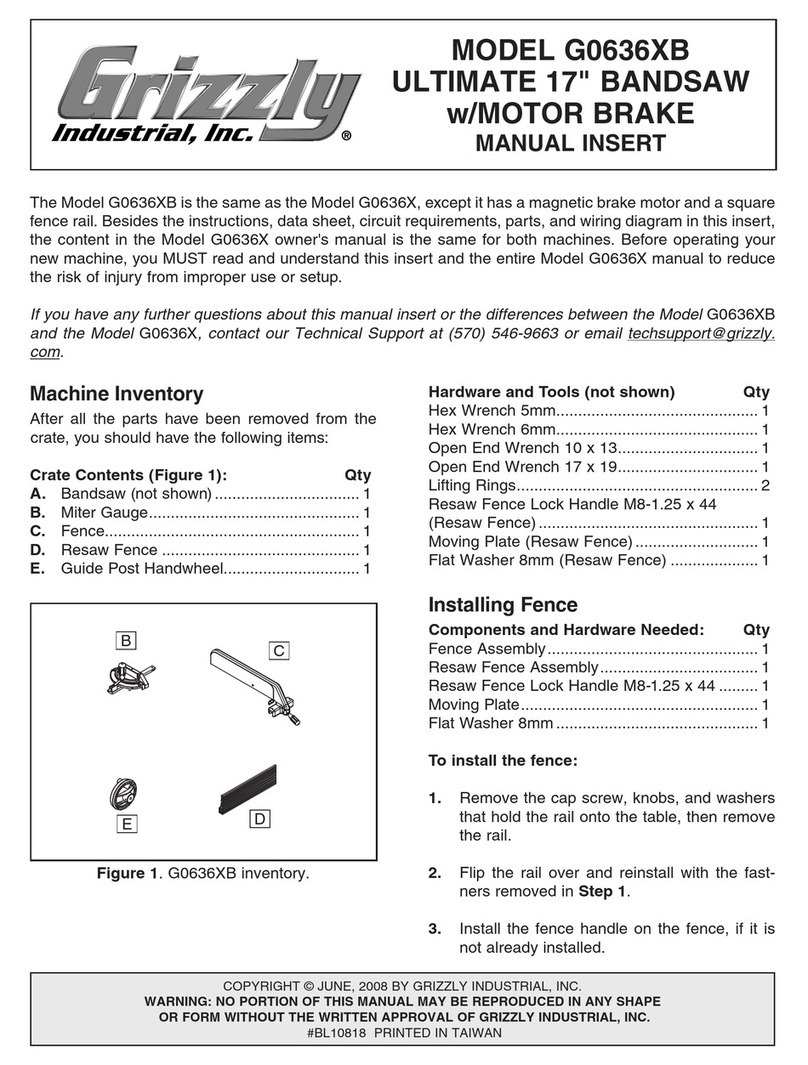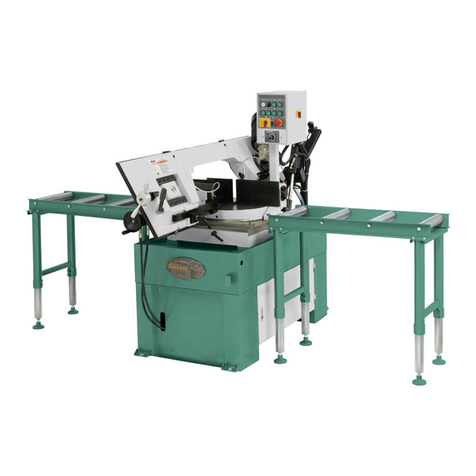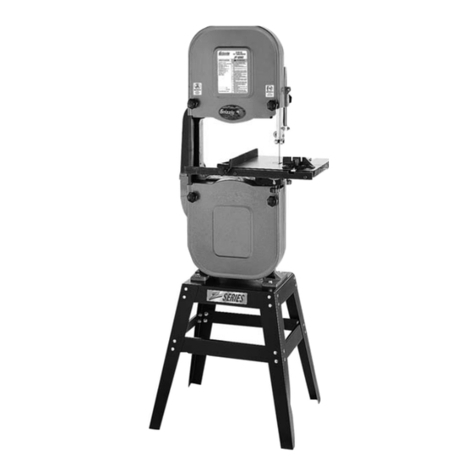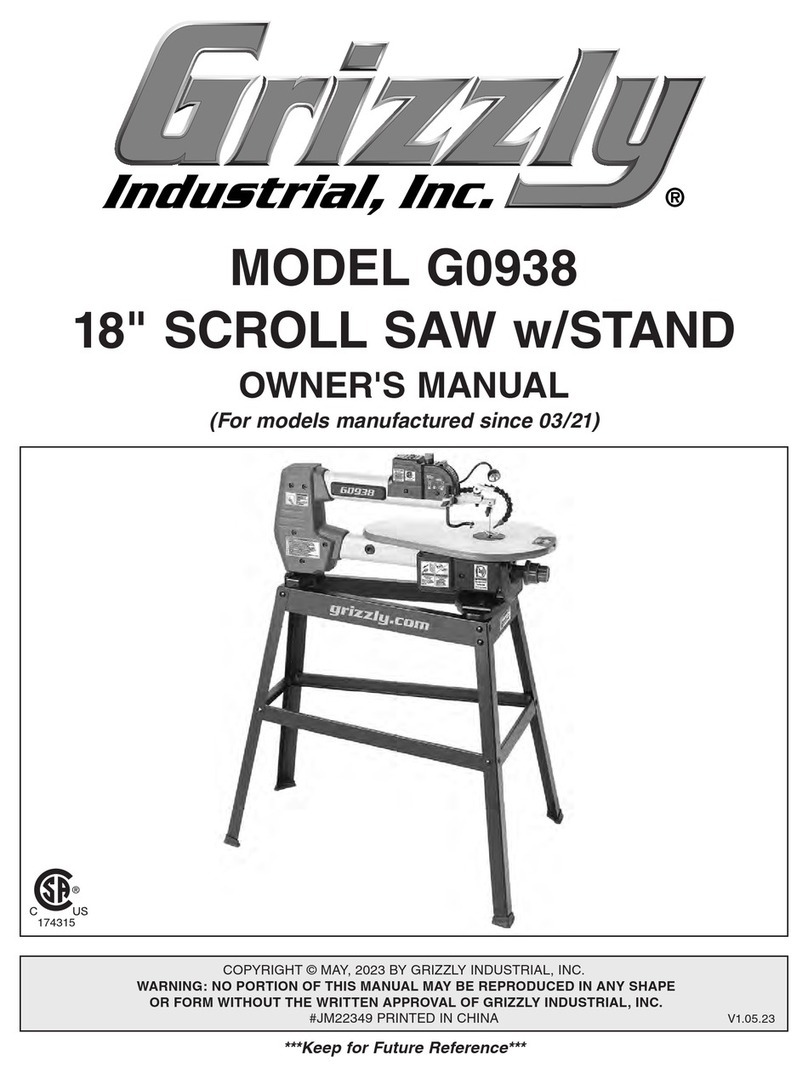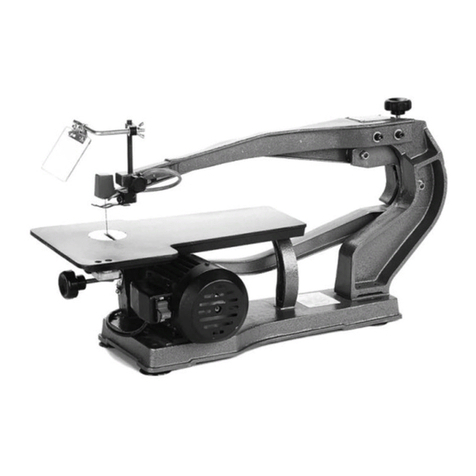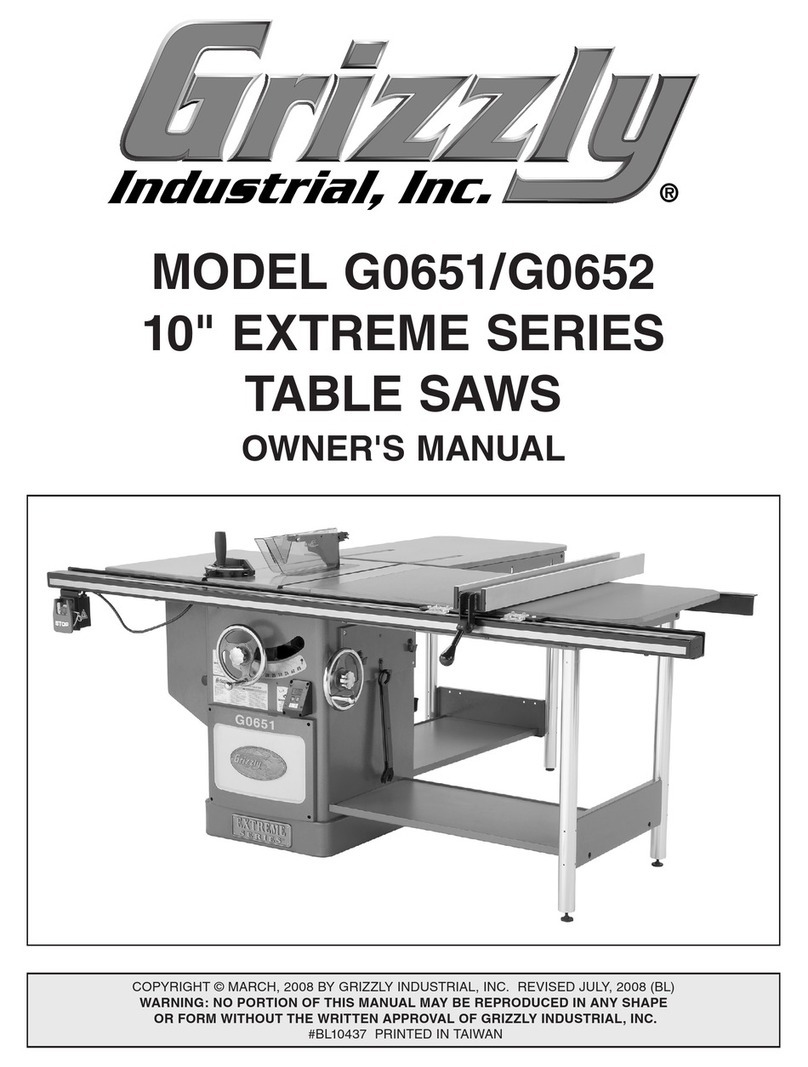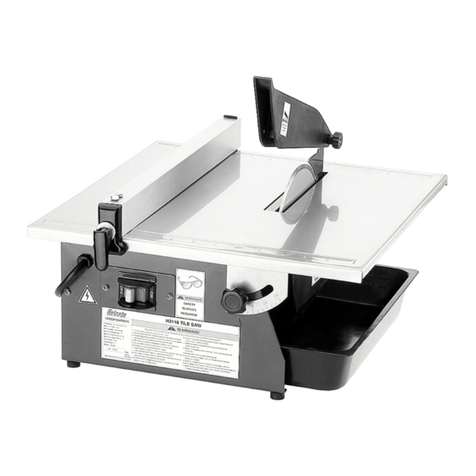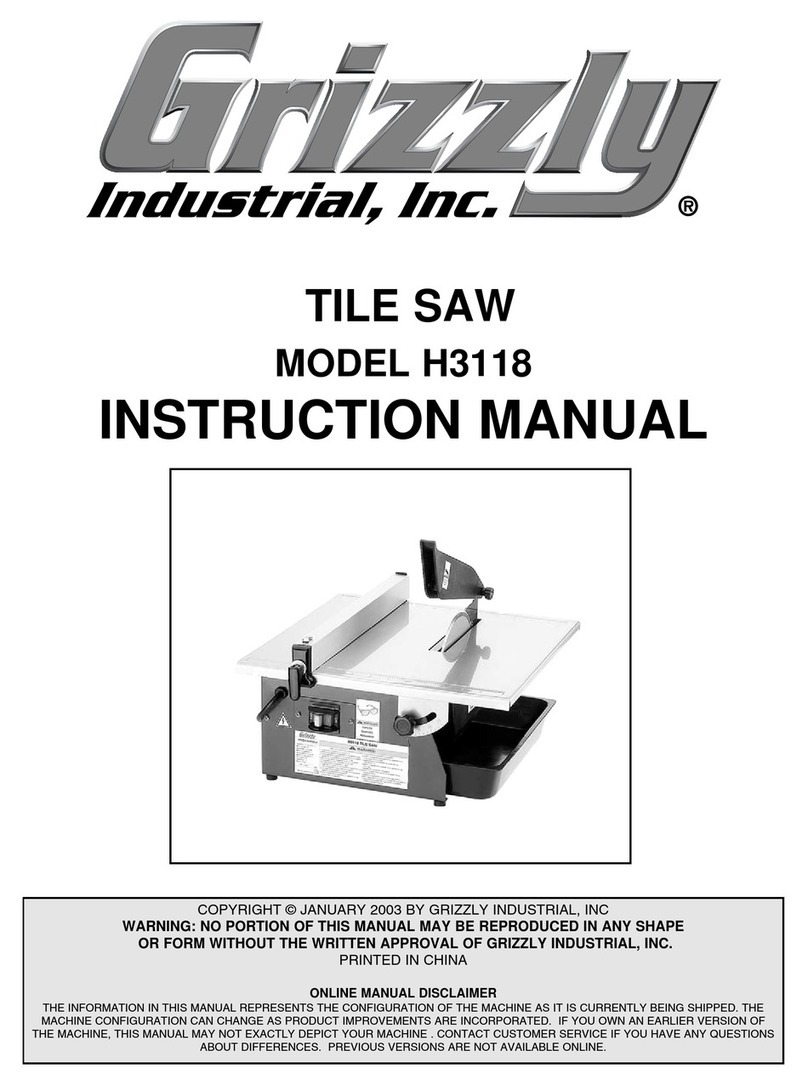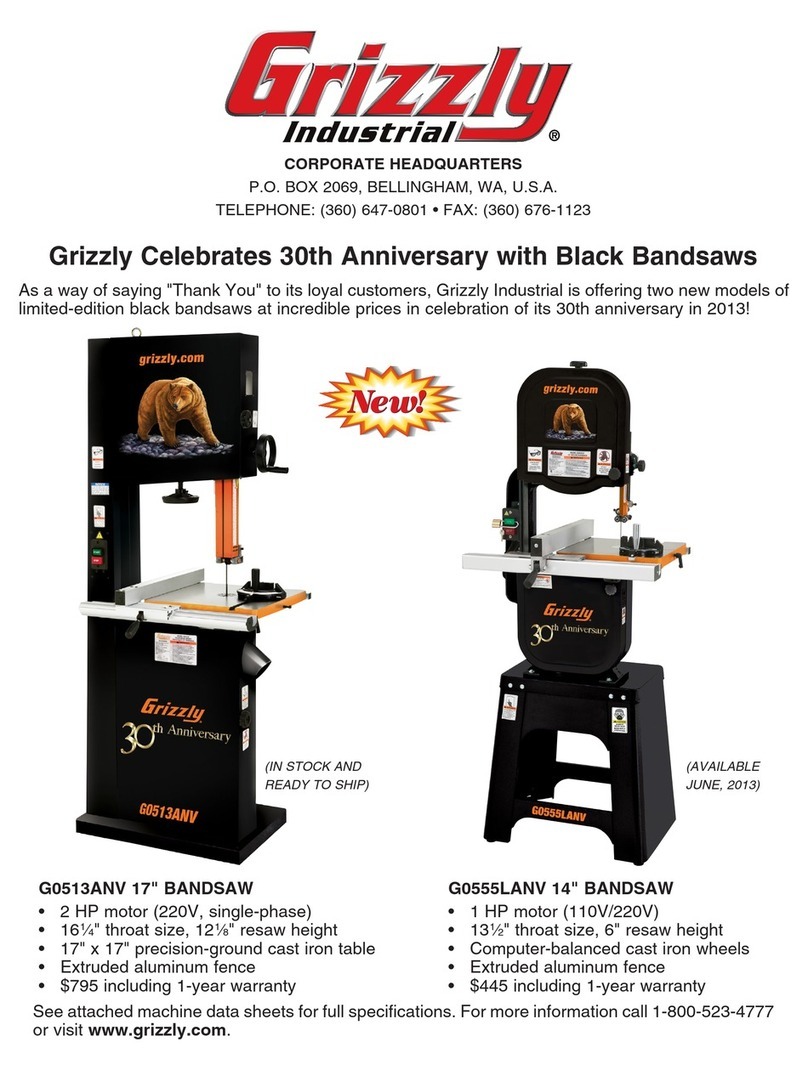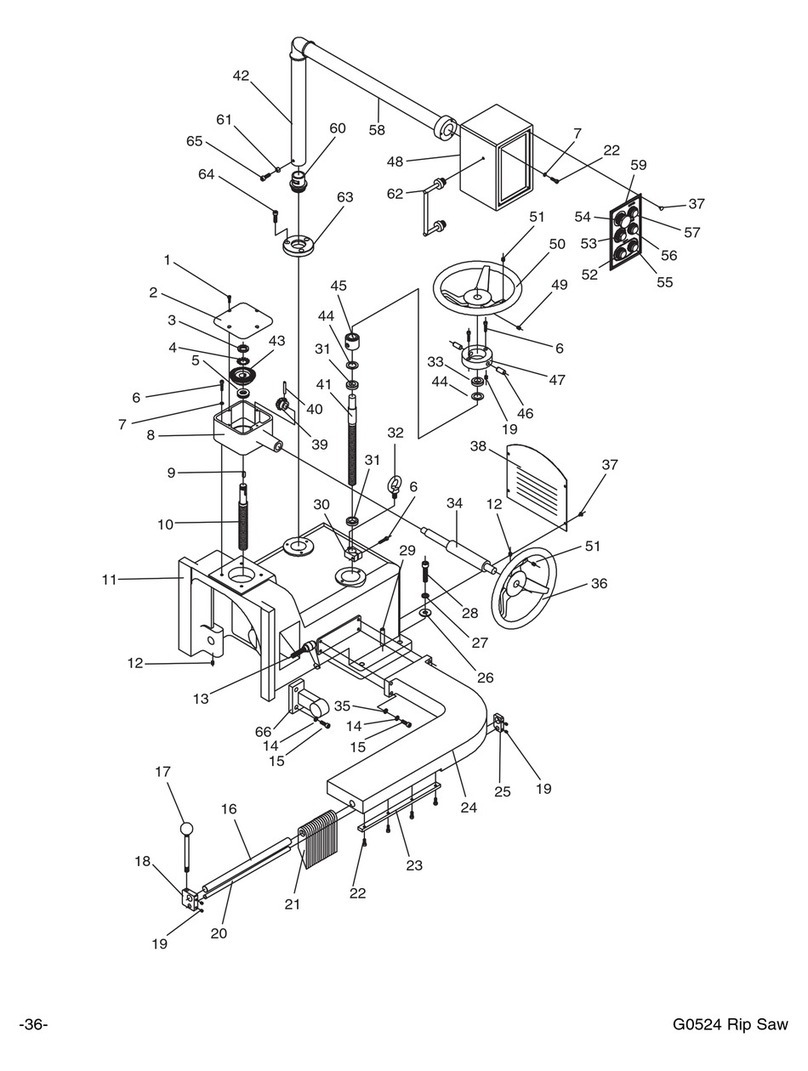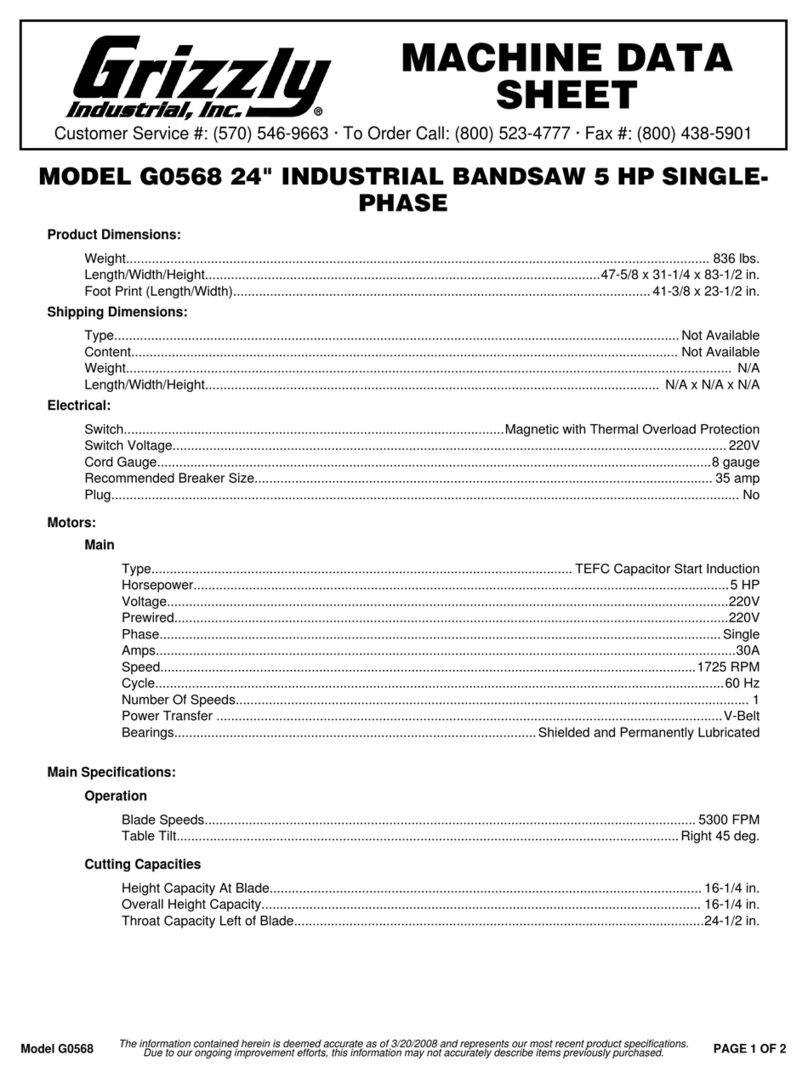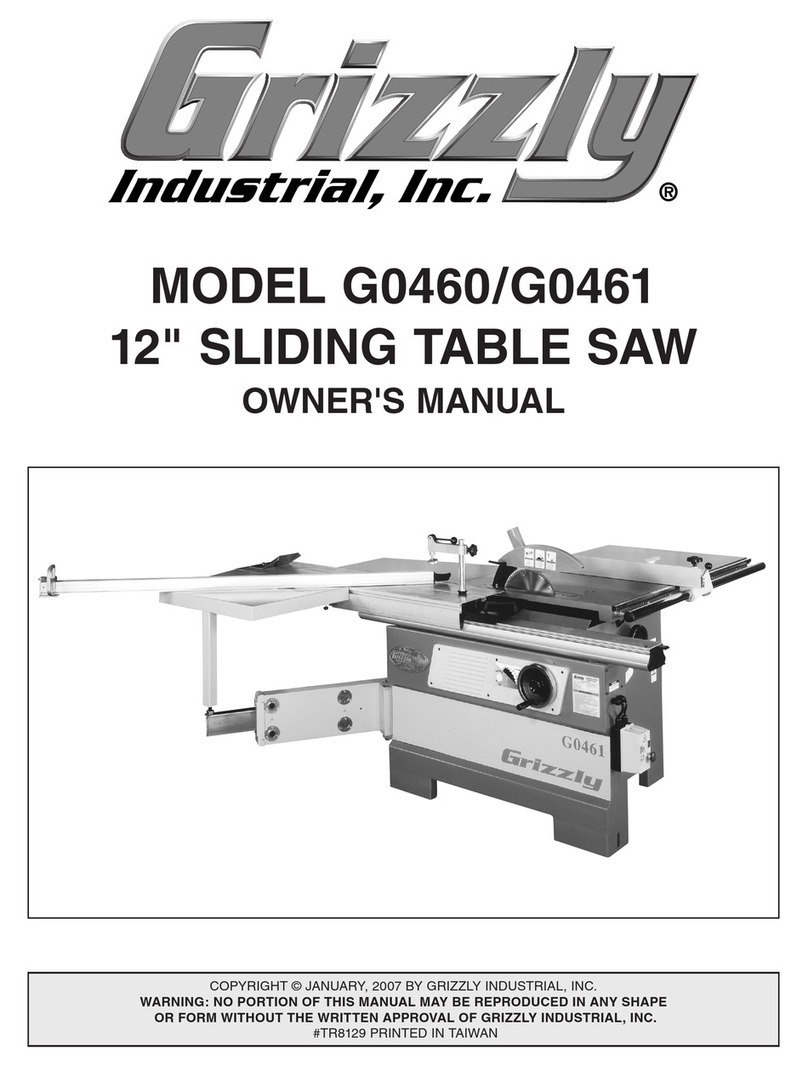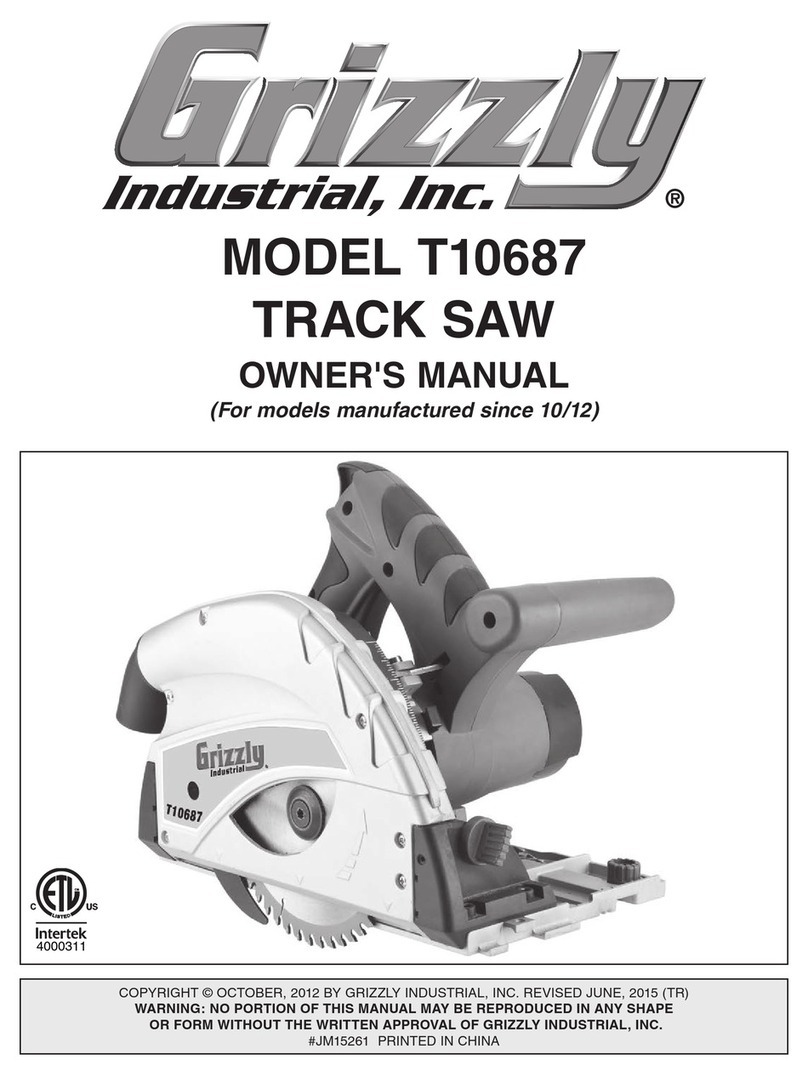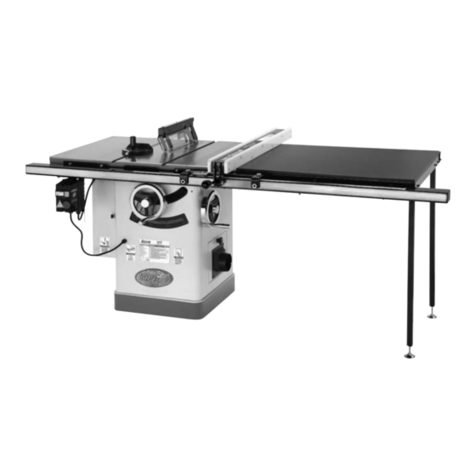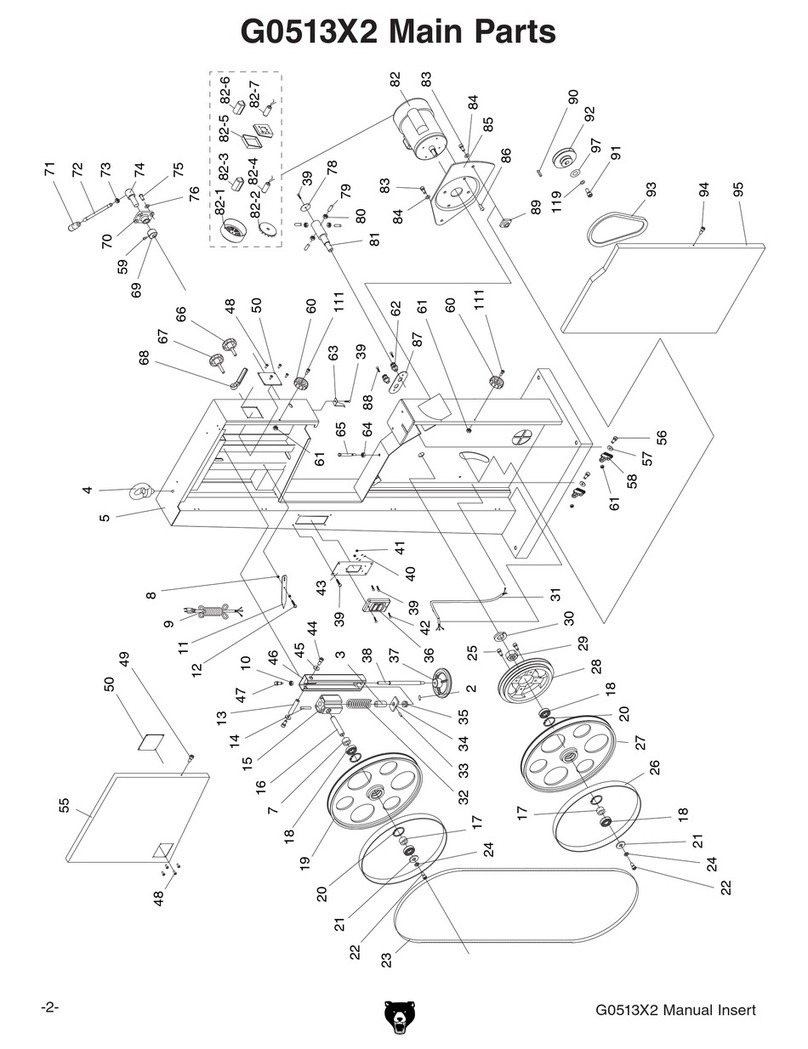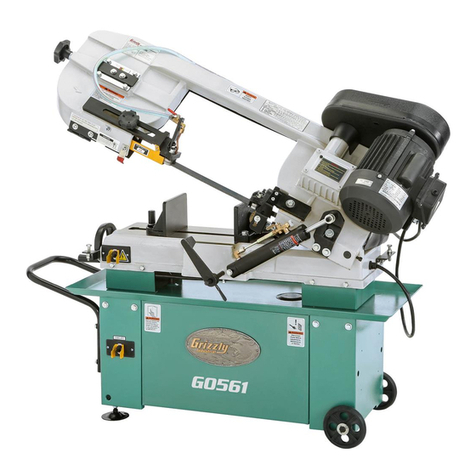We are proud to offer the Hunter’s Meat
Cutting Bandsaw. When used according to
the guidelines stated in this manual, you can
expect years of trouble-free, enjoyable opera-
tion and experience proof of our commitment
to customer satisfaction.
The saw features a sheet steel body, easy to
clean stainless steel table, and a 101/4" cutting
height. It comes equipped with a 1720 RPM, 1
HP motor.
We are also pleased to provide this manual
with your saw. It was written to guide you
through assembly, review safety considera-
tions, and cover general operating proce-
dures. It represents our latest effort to pro-
duce the best documentation possible. If you
have any criticisms that you feel we should
pay attention to in our next printing, please
write to the customer service address listed
on your catalog: attn: Manager, Technical
Documentation.
Most importantly, we stand behind our
machines. If you have any service questions
or parts requests, please call or write us at the
appropriate customer service location listed
on your catalog.
To operate this or any power tool safely and
efficiently, it is essential to become as familiar
with its characteristics as possible. Take as
much time as necessary to become acquaint-
ed with your saw. The time you invest before
you begin to use your machine will be time
well spent. Also, read all of the safety proce-
dures. If you do not understand something
about this machine, DO NOT operate it.
The specifications, drawings, and pho-
tographs illustrated in this manual represent
the Hunter’s Meat Cutting Bandaw as sup-
plied when the manual was prepared.
However, owing to our policy of continuous
improvement, changes may be made at any
Hunter’s Meat Cutting Bandsaw - 1 -
time with no obligation on our part. Whenever
possible, though, we send manual updates to
all owners of a particular tool or machine.
Should you receive one, we urge you to insert
the new information with the old and keep it
for reference.
The information in this manual has been
obtained from sources we believe to be reli-
able and as up-to-date as possible. We have
included some important safety measures
which we believe to be essential for safe oper-
ation. While most safety measures are gener-
ally universal, we remind you that each work
area is different and safety rules should be
considered as they apply to your specific situ-
ation. Also – please read the entire manual
before attempting to operate your saw.
We recommend that you keep a copy of our
current catalog for complete information
regarding our warranty and return policy.
Should you need additional technical informa-
tion relating to this machine, or if you need
general assistance or parts, please contact
the customer service department.
We also believe additional information
sources are very important for reaping the full
potential of this machine. Consulting with your
local butcher would be a good place to start.
WARNING! This saw is dangerous. Use the
tool with respect and caution to lessen the
possibility of mechanical damage or injury. If
normal safety precautions are overlooked or
ignored, injury to the operator or others in the
area is likely.
This bandsaw was specifically designed for
meat cutting. Modifications or improper use
of this tool will void the warranty. If you are
confused about any aspect of this machine,
DO NOT use it until you have resolved any
questions you have.
I. Introduction
End of Section
